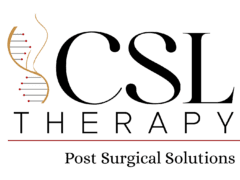Mastery of Body Altering Aesthetics Treatment Essentials: CSL Therapy Practicum
The CSL Therapy practicum serves as a detailed assessment platform designed to evaluate therapists’ proficiency in executing precise postoperative treatments and noninvasive procedures accurately. This evaluative process aims to gauge a provider’s competence in delivering high-quality care by examining their practical skills, adherence to established standards, and the application of appropriate techniques.
This specialized preparatory class ensures therapists are equipped with comprehensive knowledge and training review, preparing them to undergo the practicum assessment in line with predefined criteria.
The Practicum is a recorded session that demonstrates competency of treatments, application, client care, case study comprehension, and best professional practice for the body altering aesthetics industry.
Practicum Standards and Requirements:
- Lighting and Visibility: The recording must have clear, well-distributed lighting to ensure visibility of the treatment area, tools, and therapist’s movements.
- Clear and Unobstructed View of the Table: The recording should provide an unobstructed view of the treatment table, allowing clear observation of the therapist’s procedures and client positioning.
- Audio Clarity: The audio in the recorded session must be clear, enabling the evaluators to hear the therapist’s instructions, communication with the client, and any relevant commentary during the procedure.
- High-Quality Video: The recording should be of high quality, ensuring sharp and detailed visuals of the entire session, including close-ups when necessary to demonstrate specific techniques or procedures.
- Complete 60-Minute Session: The recorded session must encompass the entire 60-minute treatment, showing the therapist’s approach from start to finish without interruptions or editing.
- Comprehensive and Detailed Presentation: The recording should display a comprehensive portrayal of the therapist’s execution of techniques, adherence to established protocols, and application of appropriate procedures relevant to the chosen modality(s) within the Body Altering Aesthetics industry based on their assigned case study.
- Emphasis on Compliance with Criteria: The practitioner must ensure that every aspect and criteria outlined in the practicum assessment guidelines are clearly demonstrated, adhered to, and adequately addressed during the session.
These standards aim to guarantee that the recorded practicum serves as a detailed and accurate assessment of the therapist’s abilities, ensuring that all essential aspects of the practical assessment are covered, observable, and evaluated thoroughly by the CSL Therapy Board of Examiners.
Point System: 12 sections, 110 points total
Practicum Categories
The categories that you will be graded on include:
Sterilization (4 points): Assessment of proper and sterilization techniques ensuring aseptic conditions for tools and equipment used during treatments.
Client Evaluation (8 points): Thorough assessment utilizing precise measurements, detailed photographic documentation, and diligent visual evaluation combined with comprehensive note-taking for accurate treatment planning and monitoring.
Treatment Application (18 points): Demonstrating proficient and precise application of the designated therapeutic procedure(s) on the client, ensuring adherence to established protocols and techniques with precision and expertise.
Therapist Body Mechanics (4 points): Evaluation of the therapist’s posture, movements, and positioning throughout the procedure to ensure ergonomic and safe practices that minimize strain and optimize efficiency in delivering treatments.
Device integration (15 points): Assessment of the therapist’s adeptness in seamlessly incorporating and utilizing devices, tools, or equipment within the treatment procedure, ensuring effective and efficient integration for optimal therapeutic outcomes.
Client Posturing (8 points): Evaluation of the therapist’s skill in appropriately positioning and supporting the client during the session, considering the specific surgical procedure undergone by the client to ensure comfort, safety, and optimal treatment efficacy.
Draping (4 points): Assessment of the therapist’s adeptness in skillfully and appropriately using drapes to maintain client privacy, while allowing access to the treatment area, ensuring professional standards and client comfort throughout the procedure.
Client Engagement (12 points): Evaluation of the therapist’s ability to actively communicate, respond to client cues, and ensure client comfort and participation throughout the session, fostering a supportive and engaging therapeutic environment.
Provider hygiene (10 points): Assessment of the therapist’s adherence to proper hygiene standards, including attire, grooming, and the use of protective gear such as gloves when applicable, to minimize the risk of cross-contamination and ensure a clean and professional environment for the client.
Boundary Call out (3 points): Evaluation of the therapist’s communication skills in clearly stating and confirming with the client any necessary adjustments or deviations from established boundaries during the treatment, ensuring client comfort and informed consent throughout the session.
Client Transitioning (8 points): Assessment of the therapist’s proficiency in safely and smoothly transitioning the client between different positions, whether on the table or standing, considering the client’s postoperative condition and the specific procedure undergone, while prioritizing client safety and preventing therapist strain or injury.
Systemic circulation stimulation (16 points) automatic disqualification): Evaluation of the therapist’s techniques aimed at promoting adequate circulation throughout various body systems, ensuring proper blood flow and lymphatic drainage without congesting nodes or causing systemic discomfort or disqualification during the procedure. Failure to appropriately stimulate the client’s circulation or administering treatments that could impede the client’s lymphatic system will result in an automatic disqualification or failure in the practicum examination for providers.
